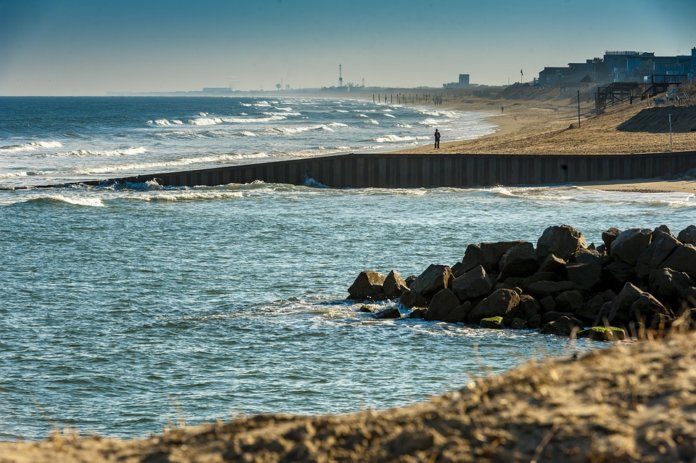Dominion Energy has received two key determinations from the federal Bureau of Ocean Energy Management (BOEM) regarding the design, fabrication and installation of the Coastal Virginia Offshore Wind (CVOW) project.
Dominion submitted its facility design report (FDR) and fabrication and installation report (FIR) in partnership with Ørsted, which is contracted to build the project, and Siemens Gamesa Renewable Energy, which is manufacturing the two 6 MW wind turbines to be installed 27 miles off the coast of Virginia Beach. BOEM has reviewed and responded to the two filings with a “no objection determination,” representing a significant milestone for the project, the partners say.
“The FDR/FIR no objection determination is the latest milestone in a list of firsts for the burgeoning offshore wind industry in the U.S. to come through the CVOW project,” says Thomas Brostrøm, CEO of Ørsted US Offshore Wind. “As the only fully permitted project in the U.S.’ federal waters, CVOW continues to provide all involved parties valuable experience that will drive regulatory efficiencies and increased certainty that will reduce costs for future projects in the U.S.”
The FDR details the design of all the major components of the offshore wind project, while the FIR describes the fabrication and installation plans of the equipment. The decision from BOEM is a necessary approval to move forward with offshore construction, which is on track for summer 2020, according to the partners.
L.E. Myers Co. began onshore construction in June to facilitate interconnection of the wind turbines at a company substation near Camp Pendleton. At peak production, CVOW will power 3,000 homes. The turbines will not be visible from shore, the partners note.
CVOW, which was first announced two years ago, received approval last November from the Virginia State Corporation Commission. The construction process is on a strict timetable in order to minimize environmental impacts to the sea bottom and aquatic life. Observers will be present during offshore construction activities to look for protected species in the area; if those species are located within an exclusion zone, work will be stopped.




